Best Match Ever: Tea and Variable Temperature controlled Kettle
Buying beautiful, high-quality tea leaves and ruining them with the wrong water temperature sounds like a daft idea.
It is like buying the best steak and frying it in a rusty and buckled pan.
Therefore good tea and a variable temperature controlled kettle is a great match and one of the best reasons (if not THE best) to invest in one.
Your brewed tea contains about 98% water and only 2% tea compounds (for more info on how tea infusion works, go to this excellent article.
If you do not get the water part right, you can do very little else to save the tea.
Tea & Water
The table below shows the tea types and their brewing temperatures.
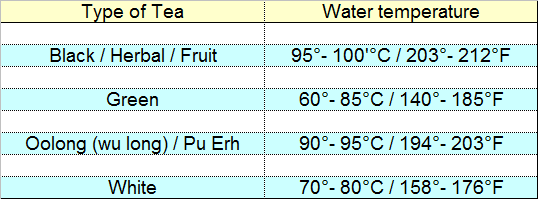
The different brewing temperatures come from different production methods for each tea type.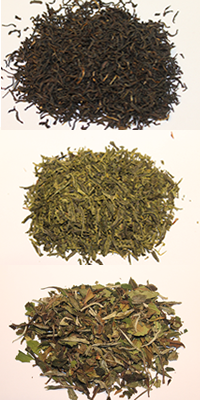
Black leaves undergo full oxidation, where enzymes in the leaf react with oxygen in the air. This process is similar to the browning of a cut apple when left outside and untreated.
To extract the full flavor, black tea requires boiling water or just below boiling (black Chinese like Keemun or Indian Darjeeling teas).
To produce the Green variety, the oxidation is prevented by steaming or pan-frying the leaves, which kills the enzymes and preserves the leaves’ green appearance.
White teas are usually just dried and graded. Some oxidation might occur naturally and intentionally (see the bottom pile in the picture to the right).
Because green and white tea leaves don’t oxidize, they require only hot water to extract the best aroma. When brewed with boiling water, you will still get a tea-like beverage without the complex and subtle notes that make green and white teas so attractive.
Brewing Tea properly
To make tea, always use fresh aerated cold water. Let the tap run for a few seconds to get rid of the stagnant remains in the pipes, especially in the mornings.
Never re-heat boiled water.
Most kettles will fully boil for 10 – 20 seconds, and this is enough to boil away all the oxygen in the water. You will end up with flat water and therefore with flat tea.
An electric kettle with temperature control is your best tool for making the most aromatic teas.
 Water quality is another issue.
Water quality is another issue.
If your tap water is too hard (skin on your tea) or full of limescale, you should consider using only filtered or bottled water.
Only soft water brings out the complexity of the leaves.
Black teas and Pu-Erh teas are a bit more robust, while green, white and Oolongs tend to be less forgiving.
Most un-oxidized quality teas (green, white, Oolong, Pu-Erh) are designed for multiple infusions. This means that the same leaves can be brewed multiple times. Each infusion will extract a slightly different mix of components and will be different in smell and taste.
Wouldn’t it be a shame if you ruined this experience with too hot or too cold water?
Can I brew tea directly in the kettle?
Interesting question with two answers: yes and no.
If everybody in the household uses the kettle for various purposes, it would not be advisable to make the tea in it as well.
The leaves will stain the inside and affect the flavor of the water.
Provided you don’t use the kettle for anything else, there is no reason not to use it as a brewing vessel for your tea leaves.
Most kettles have high heat retention and therefore are very well suited for extracting the best out of your leaves.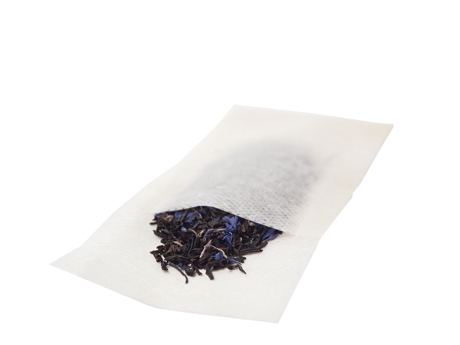
However, it is advisable to use a non-metallic strainer to prevent the tea leaves from getting stuck inside the kettle.
The best solutions are cotton tea nets or big paper bags. You can buy the XL sized bags in every tea shop or big supermarkets.
They are biodegradable and won’t leave a mess in your kettle.
By the way, tea leaves are great compost and fertilizer.
There is, however, one exception when it comes to the direct brewing – metal kettles.
The metal inside might react with the tea’s tannins (especially black tea) and contaminate your brew with a faint but annoying metal taste.
So keep the tea leaves out of kettles like the Elechomes, Epica, or Cuisinart.
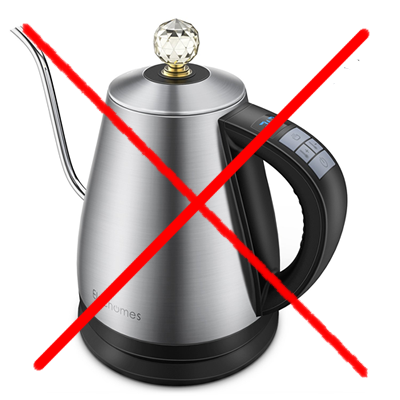
Conclusion
Brewing tea with the proper water temperature is nothing fancy or over the top—just the opposite.
It will give you many advantages you merely don’t have using a traditional kettle:
- Ensure the best quality of the infused leaves.
- Maximize the health benefits. For example, boiling water would destroy vitamin C in green and white teas.
- Value for money. If you have bought a premium (and often expensive) tea, you would want to get the best possible infusion out of it.
- Convenience and control. The programmable kettle will switch off at the desired temperature so you can do other things in the meantime and still get a beautiful cup of tea.
Enjoy your daily cups of luxury.
The Kettle Whistler
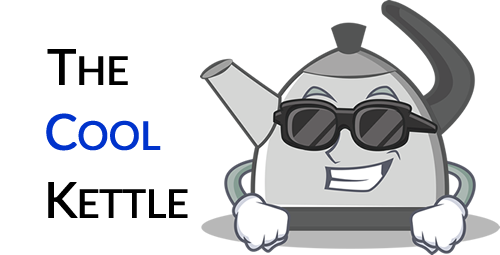
1 Comment
kettle whistler
Please leave a comment and let us know what you think.